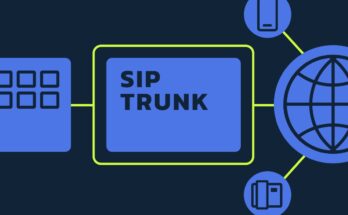In today’s digital age, artificial intelligence (AI) and machine learning (ML) have revolutionized how we interact with technology, transforming various aspects of our lives. AI and ML power innovative solutions across diverse industries, from personalised recommendations to autonomous vehicles. In this blog, we’ll explore the top 10 uses of artificial intelligence and machine learning, showcasing the remarkable ways these technologies enhance efficiency, accuracy, and decision-making in fields ranging from healthcare and finance to entertainment and transportation. Join us on a journey through the cutting-edge applications of AI and ML that are shaping the present and defining the future.
A career in the expanding landscape of artificial intelligence (AI) and machine learning (ML) offers unparalleled opportunities for growth and innovation. As businesses across industries embrace AI-driven solutions to optimize processes, analyze data, and enhance customer experiences, the demand for skilled and qualified professionals in AI and ML continues to soar. Undergoing an artificial intelligence and machine learning course equips individuals with essential programming, data analysis, and algorithm development skills. Additionally, hands-on experience with industry-standard tools and techniques enables aspiring professionals to tackle real-world challenges effectively. With the rapid advancement of AI and ML technologies, individuals who invest in learning these skills position themselves for rewarding careers at the forefront of technological innovation.
What is artificial intelligence?
Artificial intelligence (AI) is the simulation of human intelligence in machines, enabling them to perform tasks that typically require human cognition. AI encompasses a range of techniques such as machine learning, natural language processing, and computer vision, allowing systems to learn from data, understand language, and recognize patterns. These intelligent systems can analyze vast amounts of data, make decisions, and adapt to new information autonomously. AI applications are diverse, spanning industries from healthcare and finance to transportation and entertainment, and continue to drive innovation, efficiency, and automation in various aspects of our lives.
What is machine learning?
Machine learning (ML) is a subset of artificial intelligence (AI) that enables computers to learn from data and improve over time without being explicitly programmed. It involves developing algorithms that allow systems to identify patterns, make predictions, and derive insights from large datasets. ML algorithms can be categorized into supervised, unsupervised, and reinforcement learning, each suited for different tasks. Supervised learning involves training models on labeled data, unsupervised learning deals with unlabeled data, and reinforcement learning teaches agents to interact with environments to maximize rewards. ML powers applications like image recognition, natural language processing, and recommendation systems, driving industry innovation.
Top 10 AI and ML Uses
Artificial intelligence (AI) and machine learning (ML) have transformed how business organizations operate, enabling them to improve efficiency, optimize processes, and gain competitive advantages. Here are the top 10 uses of AI and ML in business organizations:
Predictive Analytics: AI and ML algorithms analyze historical data to predict future outcomes, such as customer behavior, market trends, and equipment failures. This enables organizations to make data-driven decisions and anticipate potential issues before they occur.
Customer Relationship Management (CRM): AI-powered CRM systems leverage ML algorithms to analyze customer data, predict buying patterns, and personalize marketing campaigns. This helps businesses enhance customer engagement, increase sales, and improve customer satisfaction.
Chatbots and Virtual Assistants: AI-powered chatbots and virtual assistants use natural language processing (NLP) algorithms to interact with customers and employees, answer questions, and provide assistance. This enhances customer service, streamlines support processes and reduces operational costs.
Fraud Detection: ML algorithms analyze transaction data and user behavior to detect fraudulent activities, such as credit card fraud, identity theft, and account hacking. This helps organizations prevent financial losses and protect sensitive information.
Supply Chain Optimization: AI and ML optimize supply chain operations by analyzing data from various sources, such as suppliers, warehouses, and transportation networks. This enables organizations to improve inventory management, reduce costs, and enhance delivery efficiency.
Sentiment Analysis: AI-powered sentiment analysis tools analyze text data from social media, customer reviews, and surveys to gauge public opinion and sentiment towards products, brands, and services. This helps organizations understand customer preferences, identify emerging trends, and manage reputation.
Dynamic Pricing: AI and ML algorithms analyze market demand, competitor pricing, and customer behavior to adjust pricing dynamically in real-time. This allows businesses to optimize revenue, maximize profits, and remain competitive in dynamic markets.
Personalized Recommendations: AI-driven recommendation systems analyze customer preferences, browsing history, and purchase behavior to provide personalized product recommendations. This enhances the shopping experience, increases cross-selling and upselling opportunities, and boosts customer loyalty.
Predictive Maintenance: AI and ML algorithms analyze sensor data and equipment performance metrics to predict when machinery and assets are likely to fail. This enables organizations to schedule maintenance proactively, minimize downtime, and extend the lifespan of assets.
Employee Productivity and Talent Management: AI-powered tools and platforms help organizations optimize workforce management, recruitment, and employee engagement. This includes automated scheduling, candidate screening, performance analytics, and personalized learning and development programs.
AI and ML technologies offer a wide range of applications in business organizations, empowering them to improve decision-making, enhance operational efficiency, and drive innovation across various functions and processes.
Conclusion
The top 10 uses of artificial intelligence and machine learning in businesses illustrate these technologies’ transformative impact across various industries and functions. From predictive analytics to personalized recommendations, AI and ML empower organizations to enhance efficiency, optimize processes, and drive innovation. Pursuing an artificial intelligence and machine learning course equips individuals with the knowledge, skills, and practical experience needed to harness the power of these technologies in the workplace. With the demand for AI and ML professionals rising, mastering these skills opens up diverse career opportunities in data science, AI engineering, and business analytics, enabling individuals to play a pivotal role in shaping the future of business and technology.




